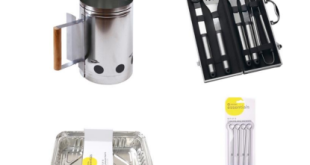 Retail footfall across the UK in June was less than half the level of last year, but the annual decline of -56.6% represents a ‘significant improvement’ from May, when footfall was -73.3% year-on-year, according to the latest data from Springboard.
Retail footfall across the UK in June was less than half the level of last year, but the annual decline of -56.6% represents a ‘significant improvement’ from May, when footfall was -73.3% year-on-year, according to the latest data from Springboard.
Covering the four weeks from May 31 to July 4, Springboard’s statistics reveal that footfall declined by -65.1% in high streets, -62.3% in shopping centres and -32.2% in retail parks.
Springboard insights director Diane Wehrle commented: “The reopening of non-essential retail stores on June 15 was the turning point which led to footfall across all UK retail destinations increasing by +40% week-on-week. This catapulted the overall UK footfall result from an average annual decline of -67% in the first two weeks to -50% for the remainder of the month.
“In England and Northern Ireland, footfall rose in the first week of reopening from the week before by +44.5% in England and +38.6% in Northern Ireland. This led to an improvement in the annual decline in these nations to around -55% versus -73% in both Scotland and Wales.
“The pent-up anticipation to shop after more than three months of closure resulted in a huge spike in footfall in the week of reopening. However, footfall in the subsequent two weeks slowed considerably, from +6.6% in the first week after reopening to +2.4% in the second week.
“Long queues, coupled with a restricted shopping experience due to social distancing, could be the contributing factors to this sudden drop off in footfall. This is concerning for the economic recovery path of bricks-and-mortar retailers, who are heavily reliant on customer experience.”
Diane noted that key differences between the three destination types may provide an early indication for the way forward. “Retail parks have been the most resilient of the three destination types throughout the lockdown,” she said. “This is due to the presence of food stores and also homeware stores that opened ahead of non-essential retail. Whilst footfall in retail parks rose by less than that in high streets or shopping centres in the week when non-essential retail reopened, the rate of decline in retail parks on an annual basis is still around half of that in the other two destination types. The fact that retail parks are open air, easily accessible by car and comprise large spacious stores, makes them more appealing to consumers during the phases of easing lockdown restrictions.
“This is a sharp contrast with high streets and shopping centres (a large proportion of which are located within town centres), which rely on a blend of shoppers, workers, students, tourists and residents to fuel spending.
“The fact that much of the workforce continues to work from home, and tourists and many students are absent, as well as the government urging consumers to only use public transport for essential travel, means that footfall and therefore sales, will continue to be compromised in these retail destinations.
“This is highlighted most clearly in the results for central London, which has the highest footfall volume of any part of the UK and, where despite footfall rising by +40.9% in the week that retail reopened, it remains -80.8% lower than last year.”
Springboard tracks and forecasts footfall across key retail destination types at national and regional levels. It records over 70 million footfall counts per week at 4,500 counting points across 480 different shopping sites in England, Northern Ireland, Scotland and Wales. Springboard is part of the Government High Street Task Force working to revitalise local high streets across the UK. Springboard’s footfall data is included in the ONS weekly statistical bulletin: ‘Coronavirus and the latest indicators for the UK economy and society’.
Springboard insights director Diane Wehrle
 Housewares Business-to-business magazine for housewares retailers and their suppliers
Housewares Business-to-business magazine for housewares retailers and their suppliers



